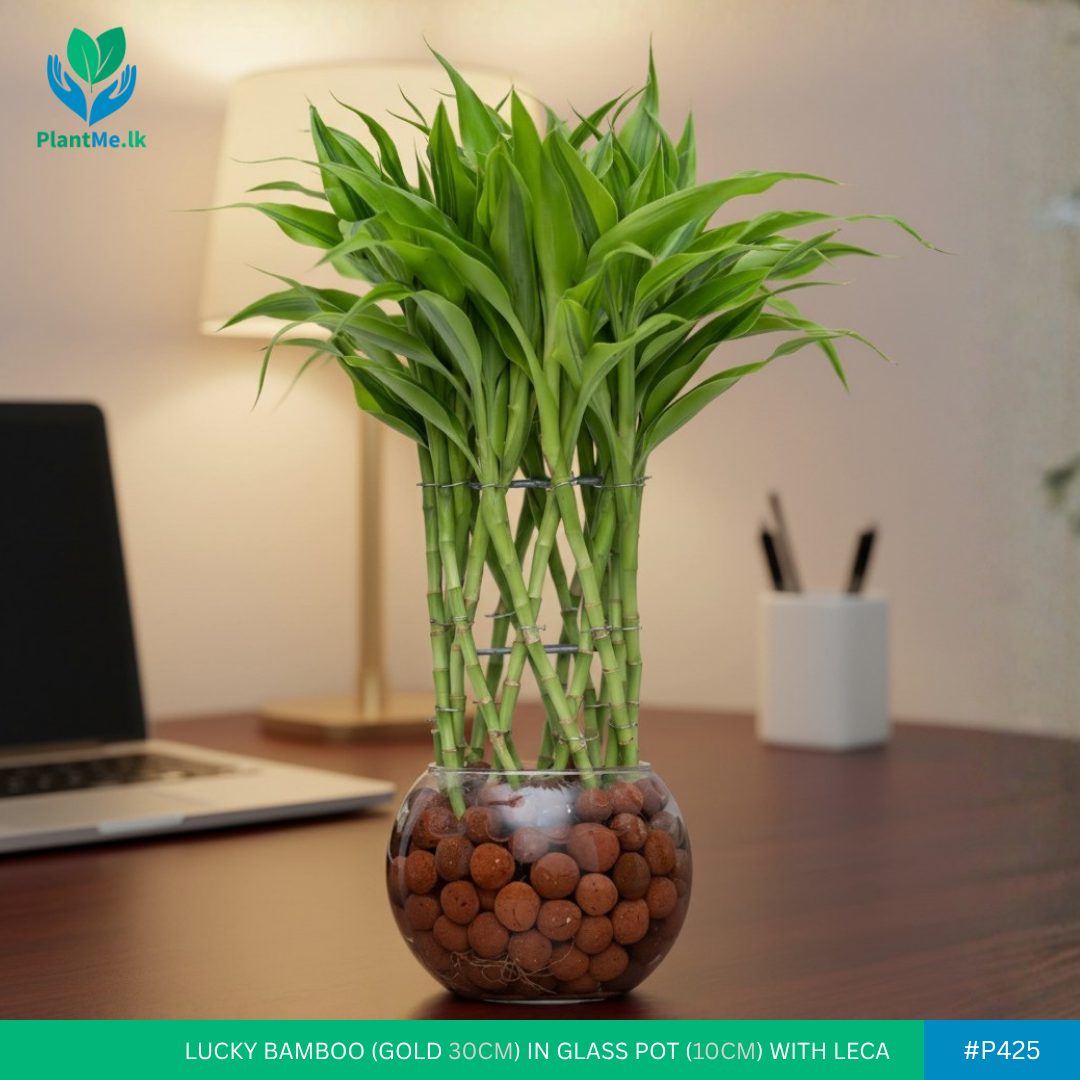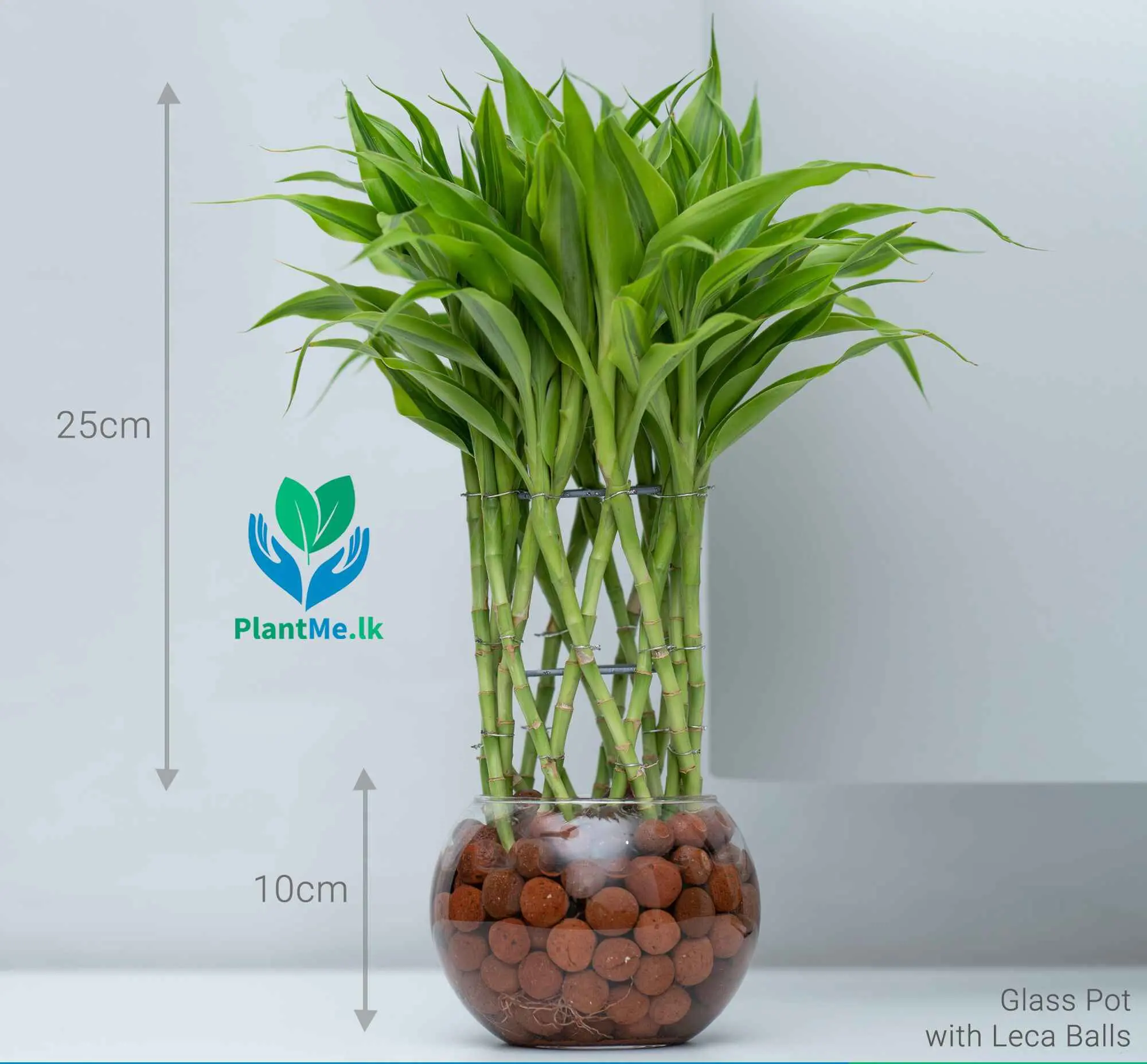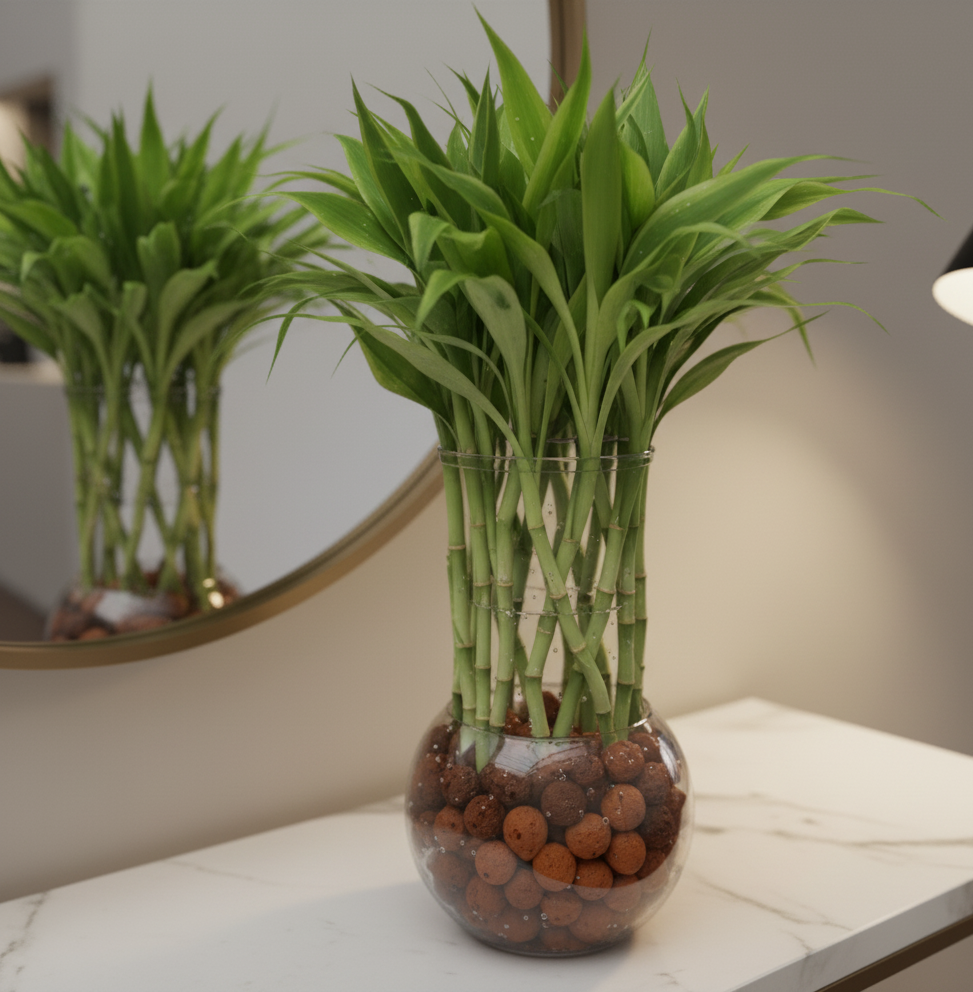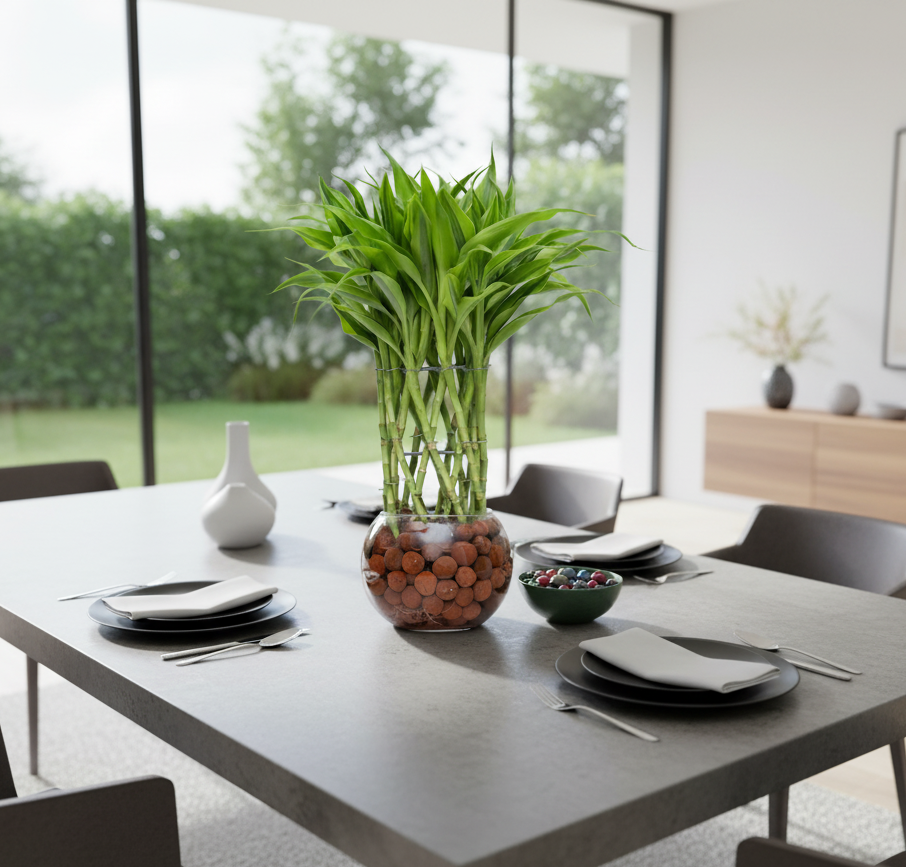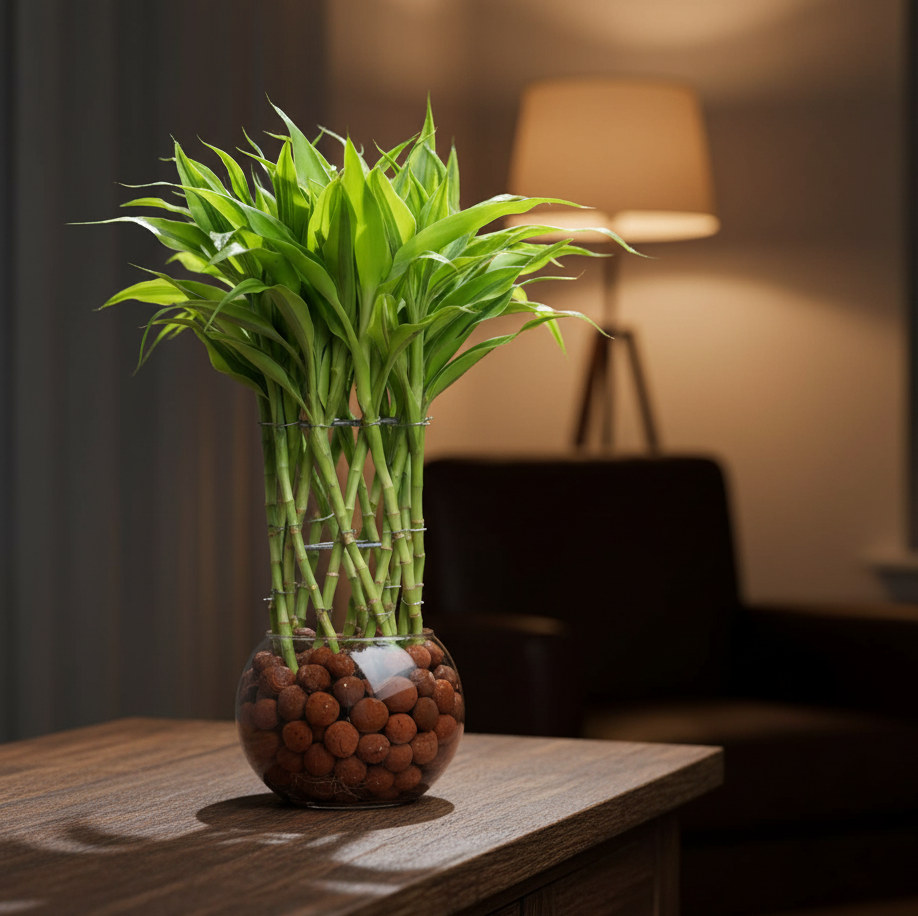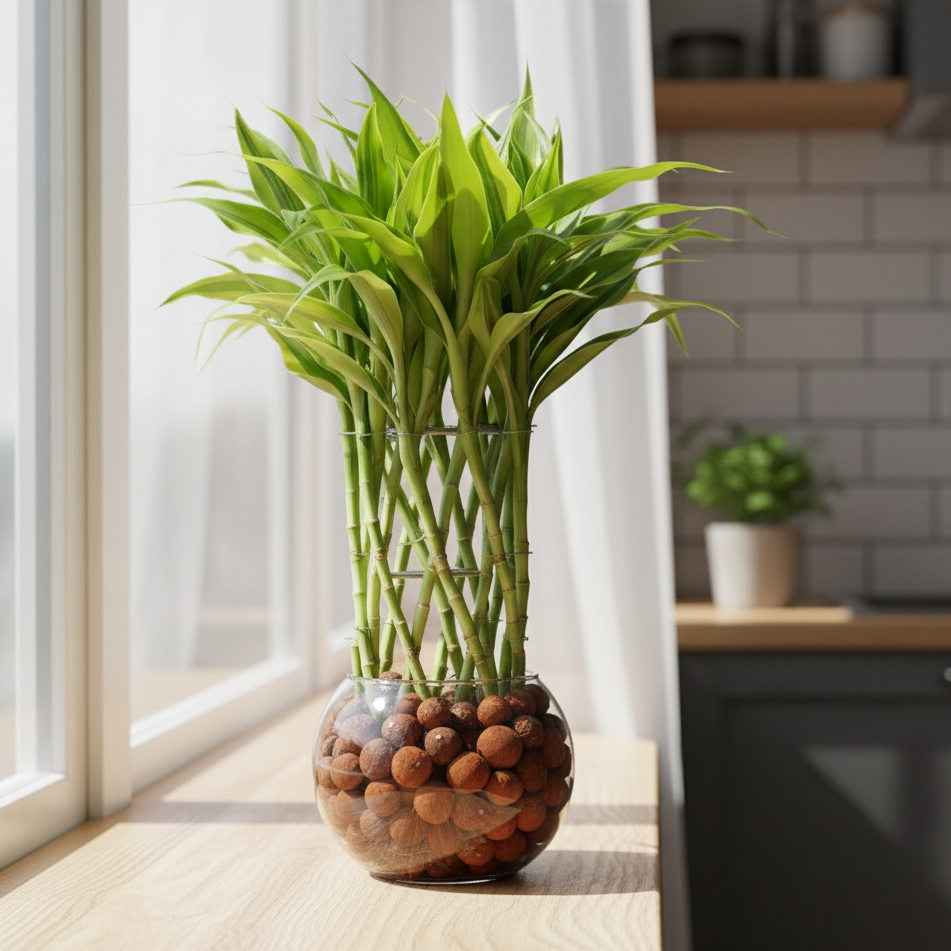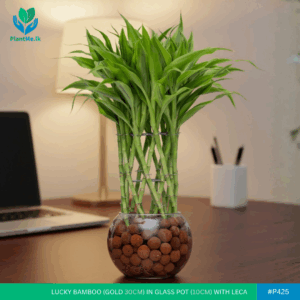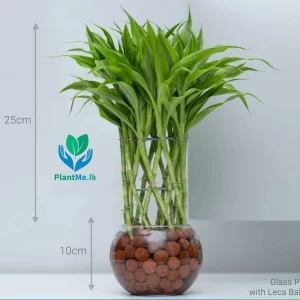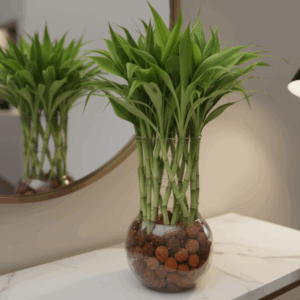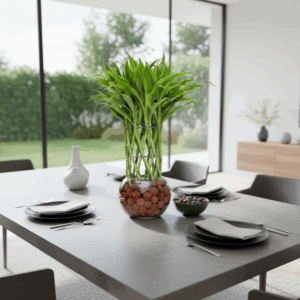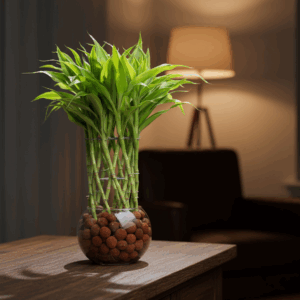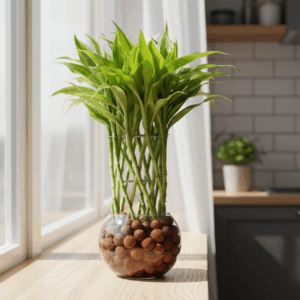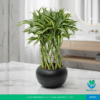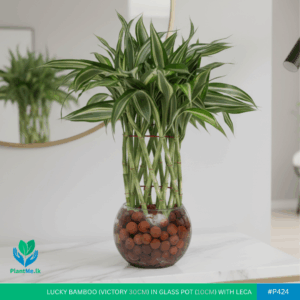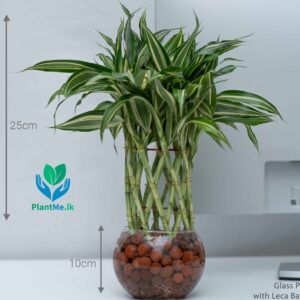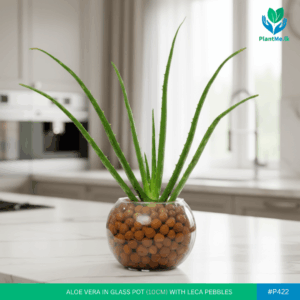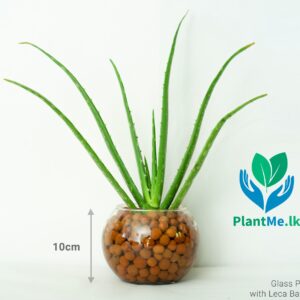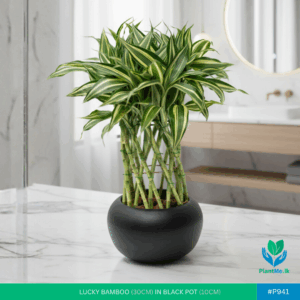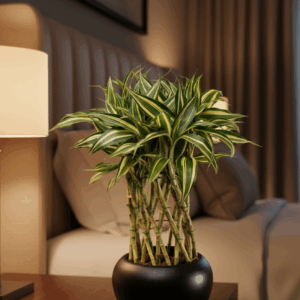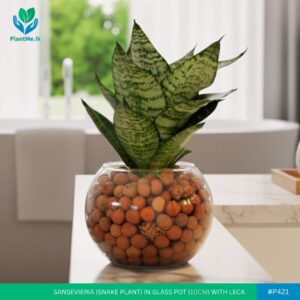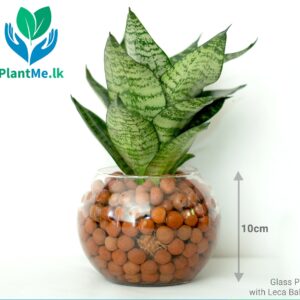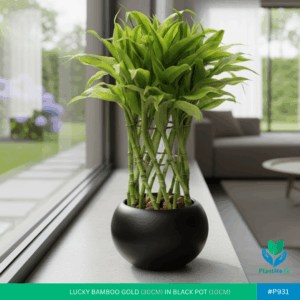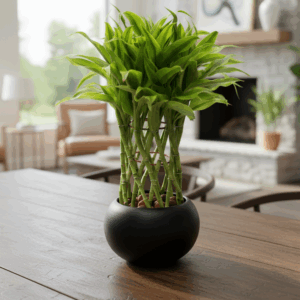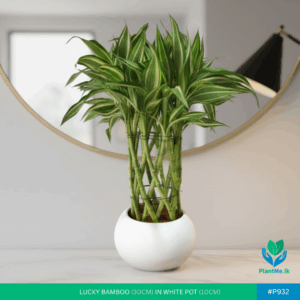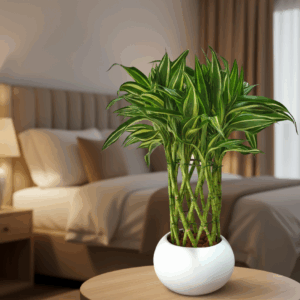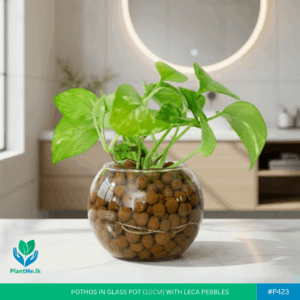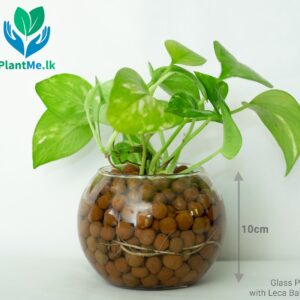Lucky Bamboo Gold in Glass Pot with LECA Balls | #P-425
Rs. 3,500.00 Original price was: Rs. 3,500.00.Rs. 2,800.00Current price is: Rs. 2,800.00.
🌿 Premium Indoor Plant – Lucky Bamboo in Glass Pot with LECA Balls 🌿
🪴 Glass Pot Diameter: 10 cm
✨ Highlights:
⭐ LECA balls provide perfect moisture balance for healthy root growth
🏡 Modern & elegant indoor décor for home or office
🎨 Stylish geometric glass pot design
🌱 Naturally growing plant — each one beautifully unique
🧘♀️ Perfect for tables, shelves, or any indoor space
(Plant size and color may vary slightly as each is naturally grown) 🌾
Lucky Bamboo Gold in Glass Pot with LECA Balls – Elegant, Low-Maintenance Indoor Plant by PlantMe
PlantMe’s Lucky Bamboo Gold in Glass Pot with LECA Balls is a perfect blend of luxury, minimalism, and natural charm. Its radiant golden-green stalks stand tall in a transparent glass container layered with smooth LECA pebbles, offering a clean, modern aesthetic while promoting healthy root growth. This stylish, soil-free plant is not just a decorative accent—it’s a living symbol of prosperity, harmony, and positive energy.
About Lucky Bamboo Gold
The Lucky Bamboo Gold (Dracaena sanderiana var. Gold) is a special variety admired for its bright, golden-tipped stems and leaves. Unlike common green varieties, the golden hue gives it a more premium and vibrant appearance, symbolizing wealth and success in Feng Shui traditions. It’s a plant that radiates optimism and balance while being incredibly easy to care for.
Modern Elegance with LECA and Glass
This premium setup features LECA balls (Lightweight Expanded Clay Aggregate)—a clean, sustainable medium that keeps roots aerated and prevents overwatering. The transparent glass pot showcases the elegant layering of LECA and roots, adding a refreshing, decorative touch that suits contemporary homes and offices alike.
- Pot Material: Clear Glass
- Medium: LECA (Lightweight Expanded Clay Aggregate)
- Color Tone: Golden-green stems with bright foliage
- Design Concept: Minimal, elegant, and symbolic
Why Choose PlantMe’s Lucky Bamboo Gold?
- ✨ Unique Appearance: Golden-tipped stems add a luxurious and uplifting look.
- 💧 Soil-Free Setup: LECA balls eliminate messy soil and reduce odor or pests.
- 🌱 Air Purifier: Removes indoor toxins while increasing oxygen flow.
- 🪴 Compact Design: Perfect for desks, countertops, and reception tables.
- 💖 Symbol of Prosperity: Traditionally believed to attract good luck and success.
Product Specifications
- Plant Type: Lucky Bamboo Gold (Dracaena sanderiana var. Gold)
- Pot Type: Clear Glass Pot
- Medium: LECA Pebbles (Hydroponic Setup)
- Light: Bright, indirect sunlight
- Watering: Once every 7–10 days (keep LECA moist, not submerged)
- Placement: Indoor – tables, offices, living rooms, entryways
Care Guide for Lucky Bamboo Gold in LECA
1) Lighting Conditions
Place your Lucky Bamboo Gold in bright, indirect light. Avoid direct sunlight, which may fade the golden coloration or cause leaf tips to burn. It can also thrive under fluorescent lighting, making it ideal for workspaces and indoor corners.
2) Watering Routine
- Check the LECA once a week—add water until the bottom layer feels moist.
- Never keep roots fully submerged; maintain only a small water reservoir.
- Use filtered or rested water to avoid chlorine damage.
Tip: Clear glass helps you monitor water levels easily—top up only when LECA appears dry.
3) Temperature & Humidity
Lucky Bamboo Gold prefers a consistent temperature between 18°C and 30°C. Keep it away from air conditioners, fans, and heaters to avoid leaf curling or browning. It adapts well to normal indoor humidity levels.
4) Fertilizer
Use a diluted liquid fertilizer once every 2–3 months to encourage strong, bright growth. Overfertilizing can harm the plant, so keep feedings light and infrequent.
5) Cleaning & Maintenance
- Wipe the glass pot regularly to keep it clear and free of mineral spots.
- Remove any yellow or wilted leaves promptly to encourage new growth.
- Rinse LECA balls occasionally under clean water to prevent algae buildup.
Symbolism & Feng Shui Meaning
Lucky Bamboo Gold is cherished in Feng Shui for attracting wealth, peace, and good fortune. The number of stalks determines the type of blessing it brings:
- 2 stalks: Love and harmony
- 3 stalks: Happiness, wealth, and longevity
- 5 stalks: Health and balance
- 7 stalks: Prosperity and positive energy
The golden tint enhances the symbolic connection to abundance and luxury—perfect for new beginnings, business openings, or gifting occasions.
Perfect for Home and Office Decor
- 🏡 Adds elegance to living rooms, kitchens, or hallways
- 💼 Ideal for office desks, reception counters, and conference tables
- 🎁 Excellent as a gift for housewarmings, weddings, or success celebrations
LECA Benefits Over Traditional Water or Soil
- Cleaner and odor-free – no stagnant water smell
- Provides superior oxygen to roots
- Reduces risk of root rot
- Long-lasting and reusable
PlantMe Premium Touch
Each Lucky Bamboo Gold is hand-selected by PlantMe experts, cleaned, and carefully layered in pre-conditioned LECA for optimal health and presentation. The glass pot is designed for modern spaces and comes ready to display—no repotting required. With minimal effort, it adds vibrance, elegance, and positive energy to your environment.
FAQs — Lucky Bamboo Gold in Glass Pot with LECA Balls (PlantMe)
1) How often should I water Lucky Bamboo Gold?
Top up water every 7–10 days, just enough to keep the LECA moist. Avoid flooding or submerging the roots.
2) Can I keep it under artificial light?
Yes. Lucky Bamboo Gold grows beautifully under fluorescent or LED lights, making it ideal for offices and rooms without direct sunlight.
3) Do LECA balls replace soil?
Yes, LECA serves as a hydroponic growing medium. It provides moisture, aeration, and stability without soil mess.
4) How tall does Lucky Bamboo Gold grow?
Typically 25–35 cm in height, depending on stalk count and light conditions. It grows slowly, maintaining its compact elegance.
5) Why are my leaves turning yellow?
Likely due to chlorine in tap water or excessive sunlight. Switch to filtered water and move to indirect light.
6) How do I keep algae from forming in the glass?
Change water regularly, rinse LECA, and keep the pot away from direct sunlight to prevent algae buildup.
7) Is it safe for pets?
Lucky Bamboo is mildly toxic if ingested by cats or dogs. Keep it out of their reach for safety.
8) Can I propagate Lucky Bamboo Gold?
Yes! Cut a healthy stalk just below a node, place it in water or LECA, and roots will develop in 2–4 weeks.
9) Does it bring good luck?
According to Feng Shui, Lucky Bamboo attracts wealth, peace, and harmony—especially when kept in the east or southeast corner of a home or office.
10) Why choose PlantMe’s version?
PlantMe’s Lucky Bamboo Gold is prepared using premium LECA, crystal-clear glass pots, and preconditioned water balance—offering both beauty and long-lasting plant health in one elegant package.

